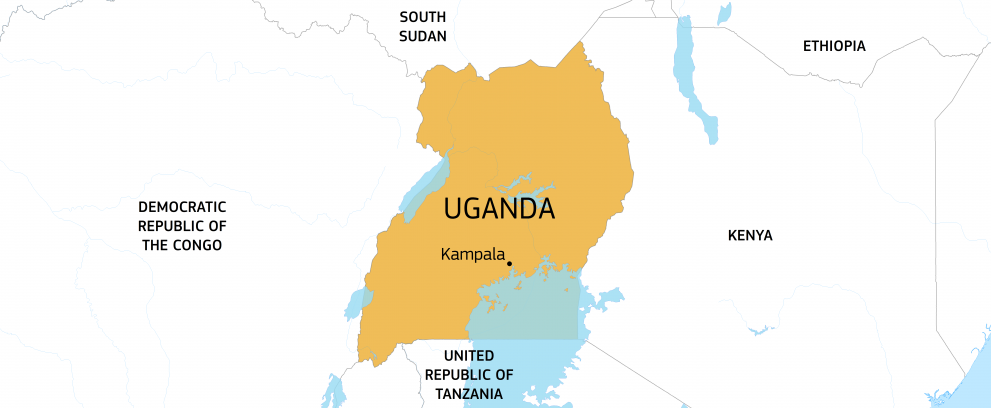Introduction
Uganda hosts over 1.8 million refugees and asylum seekers. This is the largest refugee population in Africa and the 6th largest in the world. Refugees mainly come from South Sudan (54%) and from the Democratic Republic of the Congo (32%). Uganda is constantly receiving new arrivals, with over 443,000 refugees arriving since January 2022.
Uganda is also impacted by the crisis in Sudan, with 69,000 new Sudanese refugees who arrived in the country since the conflict started in 2023.
While Uganda is praised for its open-door policy, the constant influx of new arrivals is putting its progressive refugee policy under pressure.
The country is also vulnerable to natural hazards (such as floods, landslides, drought, hailstorms) and epidemics (such as cholera, Ebola, malaria, measles and more recently mpox). At the same time climate changes lead to more frequent and extreme weather events across the country.
What are the needs?
Life-saving humanitarian assistance to refugees is crucial to meet their basic and protection needs. 78% of refugees are women and children and 91% are in need of food assistance.
The decreasing funding for humanitarian assistance impacts the delivery of essential services, including food rations, core relief packages (or cash) for new arrivals, hygiene kits, medicines, and self-reliance projects. This decline in support also places a strain on public services such as water, sanitation, hygiene, health, and education in refugee settlements, where these services are already below national standards. As a result of these funding cuts, negative coping mechanisms have emerged, affecting not only refugees but also threatening the peaceful coexistence between refugee populations and host communities.

There is also a need to support Uganda’s efforts to better anticipate and respond to multiple and high-risk hazards and epidemics. In 2023, 222,000 people were affected by floods, landslides, hailstorms and fires, and over 49,000 have been displaced. In the North-East Karamoja region, 600,000 people face acute food insecurity, due primarily to climate shocks and hazards, including insufficient rain which contributes to persistently low levels of food and livestock production.

How are we helping?
Since 2017, the EU has supported humanitarian action in Uganda with more than €362 million.
For 2025, the EU allocated €20.5 million for humanitarian aid. In addition, the EU mobilised €1.4 million more to respond to the Ebola outbreak.
EU humanitarian funds help address the needs of over 1.8 million refugees, asylum seekers, and host communities as well as the needs of people exposed to natural hazards. It focuses on providing rapid and effective emergency assistance to recently arrived refugees, improving access to basic services in refugee settlements, anticipating and responding to disasters. EU funding makes a major contribution to the provision of (i) protection services and multi-purpose cash transfers, (ii) access to improved primary healthcare, (iii) safe water and sanitation, (iv) education to refugees and their host communities, (v) food assistance, and (vi) disaster preparedness and response.

Many refugee and host community children are out of school. EU humanitarian aid contributes to ensuring safe and inclusive access to quality formal and non-formal primary and secondary education for refugee children, as well as for the especially vulnerable children of host communities.
Depending on their needs, children and adolescents receive tailor-made assistance based on age, gender, and abilities.
For 2025, the EU has allocated €5 million for education, including child protection services.
The EU also contributes to strengthening the capacities of local first responders and setting up early warning systems. This means establishing timely, effective, and locally driven anticipatory action and first emergency response in case of a disaster or outbreak.
In February 2025, the EU mobilised € 200,000 to support Uganda’s response to the Sudan (Ebola) virus outbreak. In May 2024, the EU mobilised €175,000 to support the most vulnerable households affected by floods and landslide disasters. In July 2024, the EU mobilised €150,000 to provide humanitarian assistance to newly arriving Sudanese refugees in the Kiryandongo refugee settlement.
Beyond the provision of humanitarian aid, the EU helps increase the resilience and autonomy of the most vulnerable people, reducing their dependency on aid in the long term. This is particularly relevant in Uganda, where refugees can move freely, work, and start businesses. EU development aid in Uganda complements humanitarian aid in areas with a high refugee population. It addresses the longer-term needs of refugees and their host communities, such as vocational training for young people and strengthening local livelihoods.
Last updated: 14/04/2025

